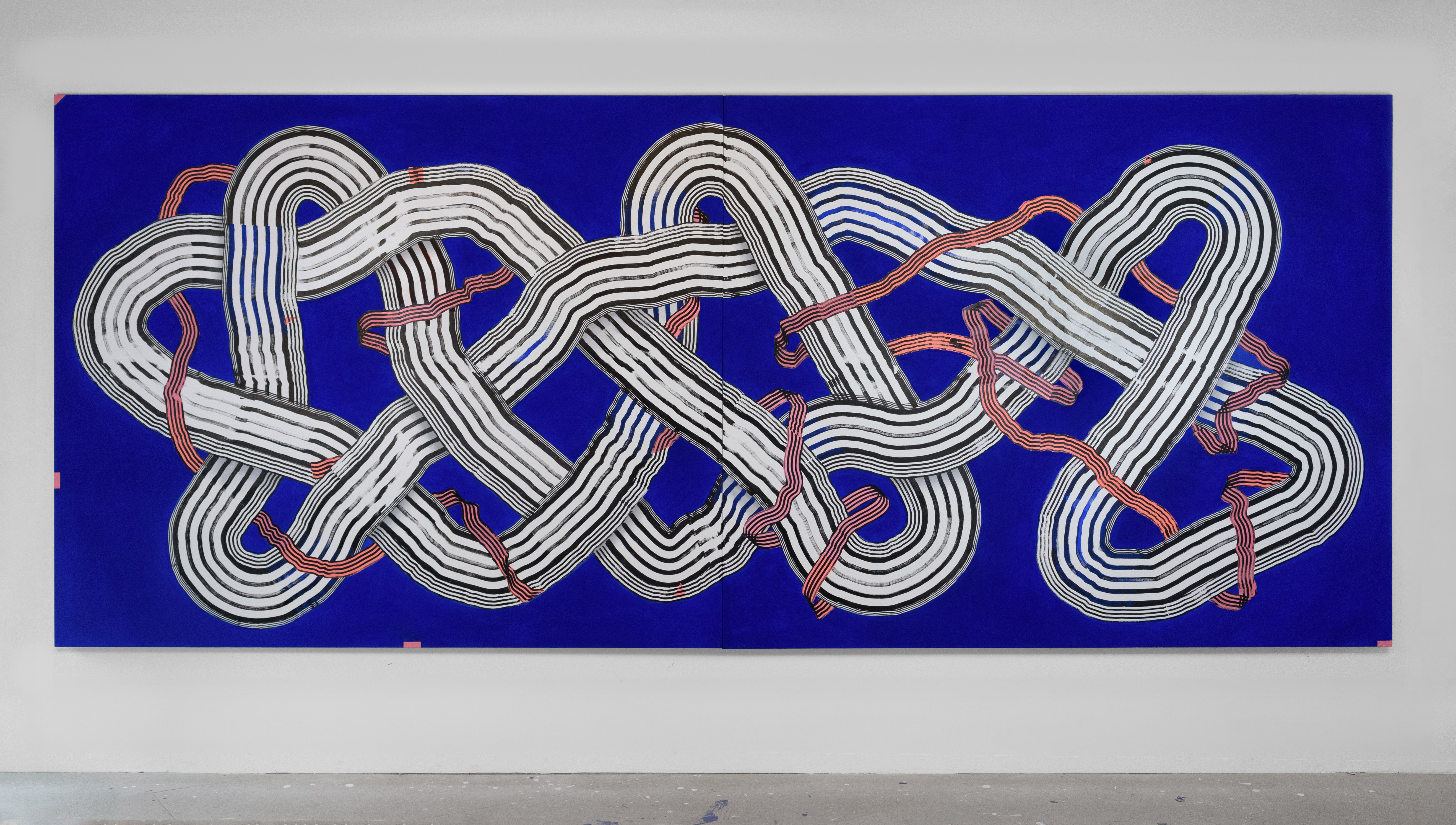08/2025 A NEW CHAPTER FOR THE MUNICH RE ART COLLECTION
A new chapter for the Munich Re Art Collection
After 30 years of visionary work, Susanne Ehrenfried-Bergmann will step down as Chief Curator of the Munich Re Art Collection in August. Her passion and expertise have shaped the collection into one with international standing – and one that brings renowned and emerging artists into dialogue with our workspaces. From striking light installations in underground passages to site-specific artworks in courtyards and outdoor spaces, her legacy can be seen in every detail. She has also championed cultural responsibility through partnerships with academies and organisations.
We are pleased to welcome Maja Emmerlich as her successor. After working at various cultural institutions, she has been reinforcing the Corporate Art team as a curator since 2023. Susanne and Maja have worked together on numerous national and international projects and, above all, exchanged ideas on possible strategies for the future. Thanks to her experience and fresh perspective, Maja will continue to evolve the collection and explore new ways of integrating art into our global workplace.

12/2024 NEW IN THE COLLECTION | SOFIA CLAUSSE
Sofia Clausse
Towards the bluest within, 2024
Sofia Clausse's (b. 1989) artistic practice delves into themes of infinity, time, and language, using painting, paper, and unique tools she creates herself. Her art is a reflection of her exploration into the intrinsic nature of tools and their impact on expression.
The artwork Towards the Bluest Within delves into the ancient symbol of the labyrinth, often seen as a spiritual journey of finding oneself. The painting explores this concept with a unique blend of painted and paper lines. These lines, in white and black on canvas, and pink and black as paper cutouts, weave together, interact with one another, creating an intriguing interplay of paths. Sometimes clear, sometimes erratic, they symbolize the journey of discovery and renewal. This challenges the viewer's perception and encourages introspection.
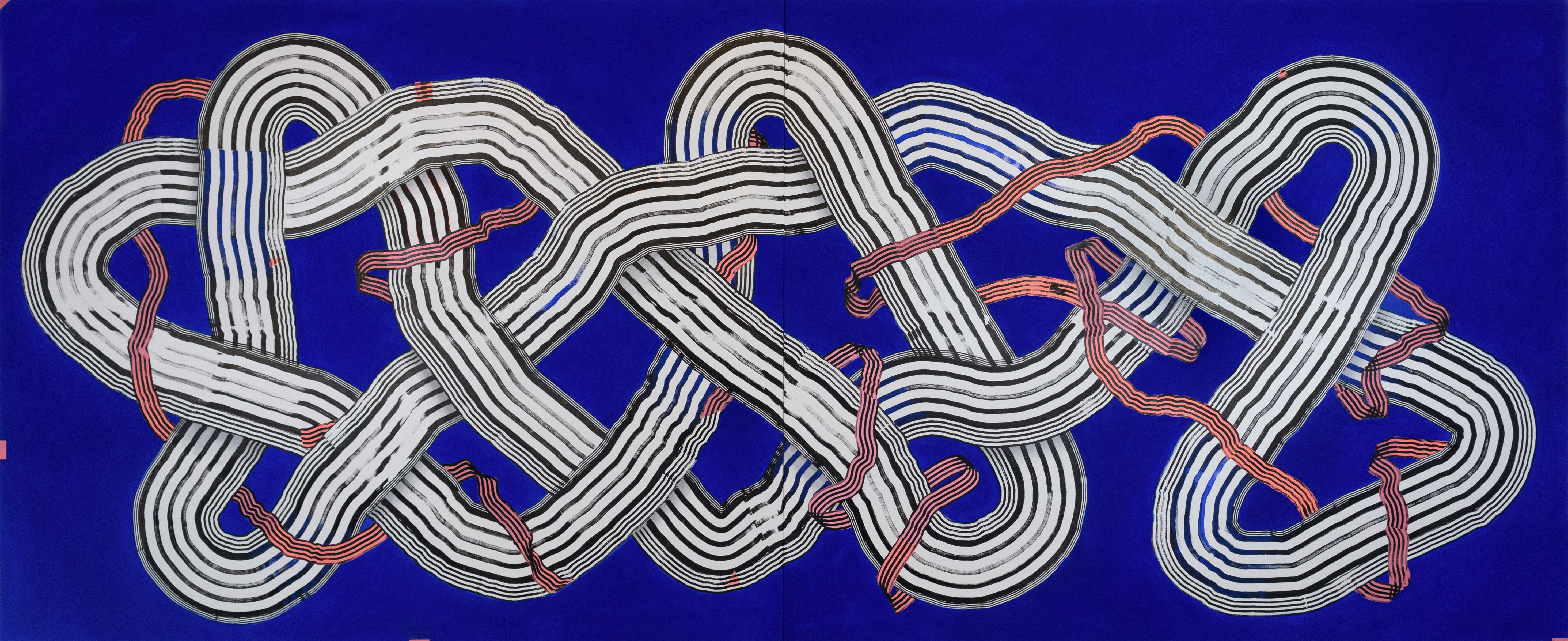
12/2022 NEW IN THE COLLECTION | MIRIAM FERSTL
Photographs from the series Light Cells
2016–2020
Since December 2022, 26 works from the photographic series Light Cells (2016–2018) by Miriam Ferstl have been part of the Munich Re Art Collection. These were previously shown as part of a temporary presentation in Munich Re’s historic boardroom and have now been acquired permanently for the collection.
Over the years, Miriam Ferstl has photographed crystal chandeliers in theatres, opera houses, churches, synagogues and mosques all over Europe and in the Maghreb region – from below. The results are photographic compositions with abstract-looking, radiant formations that evoke associations of elementary natural forms or crystalline structures. The actual subject only reveals itself at second glance. Like the places where the artist captured the crystal chandeliers with her camera, the photographs have a contemplative as well as an inspirational effect.
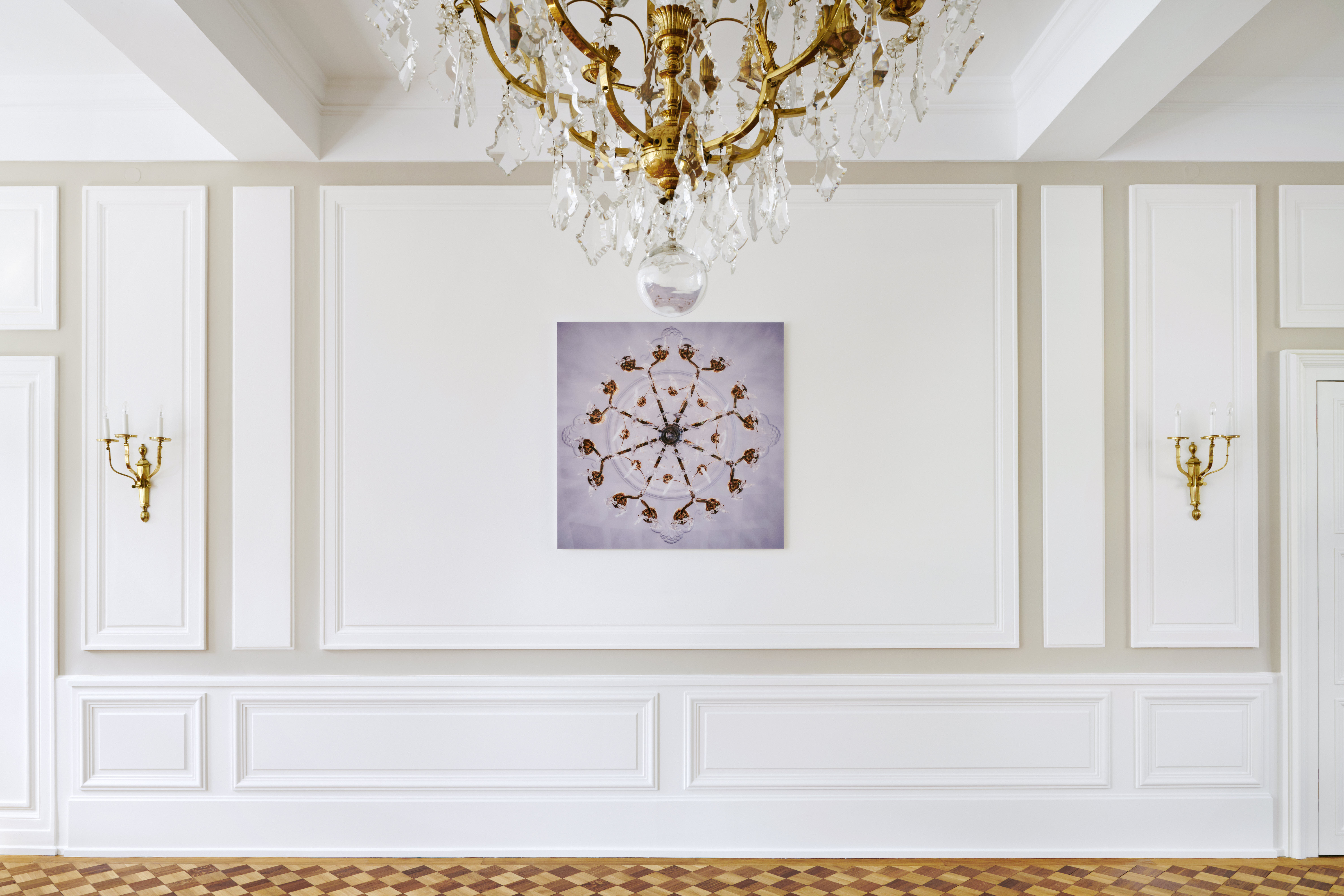
04/2022 ART AND ARCHITECTURE | DAVID ZINK YI
NEUSILBER (NEW SILVER)
7-piece installation for the reception area of the office building on Berliner Strasse
With their thin, fragile-looking trunks, the seven stainless steel palm trees are reminiscent of those that characterise the urban space of many cities in the south of the USA. For his installation, David Zink Yi took palm plants of the genus “Washingtonia robusta”, which grow to a height of over 30 m in nature, as a model and had them cast in stainless steel on a scale of approx. 1:10. The palm crowns with their sharp and filigree leaves, otherwise at an inaccessible height for humans, can be experienced in an unusual way from different perspectives in the spatial context of an office building. All cast elements are, like their natural models, unique. The sheets are cut out of thin stainless steel and folded by hand. To achieve this precision, Zink Yi chose stainless steel, although he originally wanted to realise the installation in the shiny silver-white alloy "new silver", which was technically impossible. The title of the work is a reminiscence of the primary idea.
Through the silvery surface of the stainless steel and the precise execution of the lifelike palm trees, Zink Yi creates an atmosphere of cool urbanity between naturalistic form and idealised artificiality. The play with perspective as well as with the contrasts of nature and architecture, outside and inside, creates an inspiring spatial effect - in the midst of everyday office life.
During the setup of the installation Neusilber: A conversation with David Zink Yi.
© David Zink Yi / Munich Re
10/2021 NEW IN THE COLLECTION | ERIKA HOCK
FIGURES & FIELDS
Installation for Munich Re's new lounge
Erika Hock explores the boundaries between art, architecture and design in her works. Oscillating between image and object, her artworks consist of knitted threads that are printed and layered according to the artist's specific instructions. The textile, filigree material lends the works an extremely sensual quality that challenges the viewer not only visually but also haptically.
For Munich Re's new lounge, Erika Hock developed an overall artistic concept with eight objects whose abstract compositions open up a dialogue with the space - not only with regard to its architectural repertoire of forms. The large-format wall piece on the central end wall evokes the association of an incoming ray of light through its circular color gradient in delicate rosé. In this way, the artist succeeds in connecting the rather dark side of the room with the light side facing the garden. The subtle colors, the formats and shapes of the individual works, and their sensual materiality enrich the atmosphere of the new lounge in a very special way.
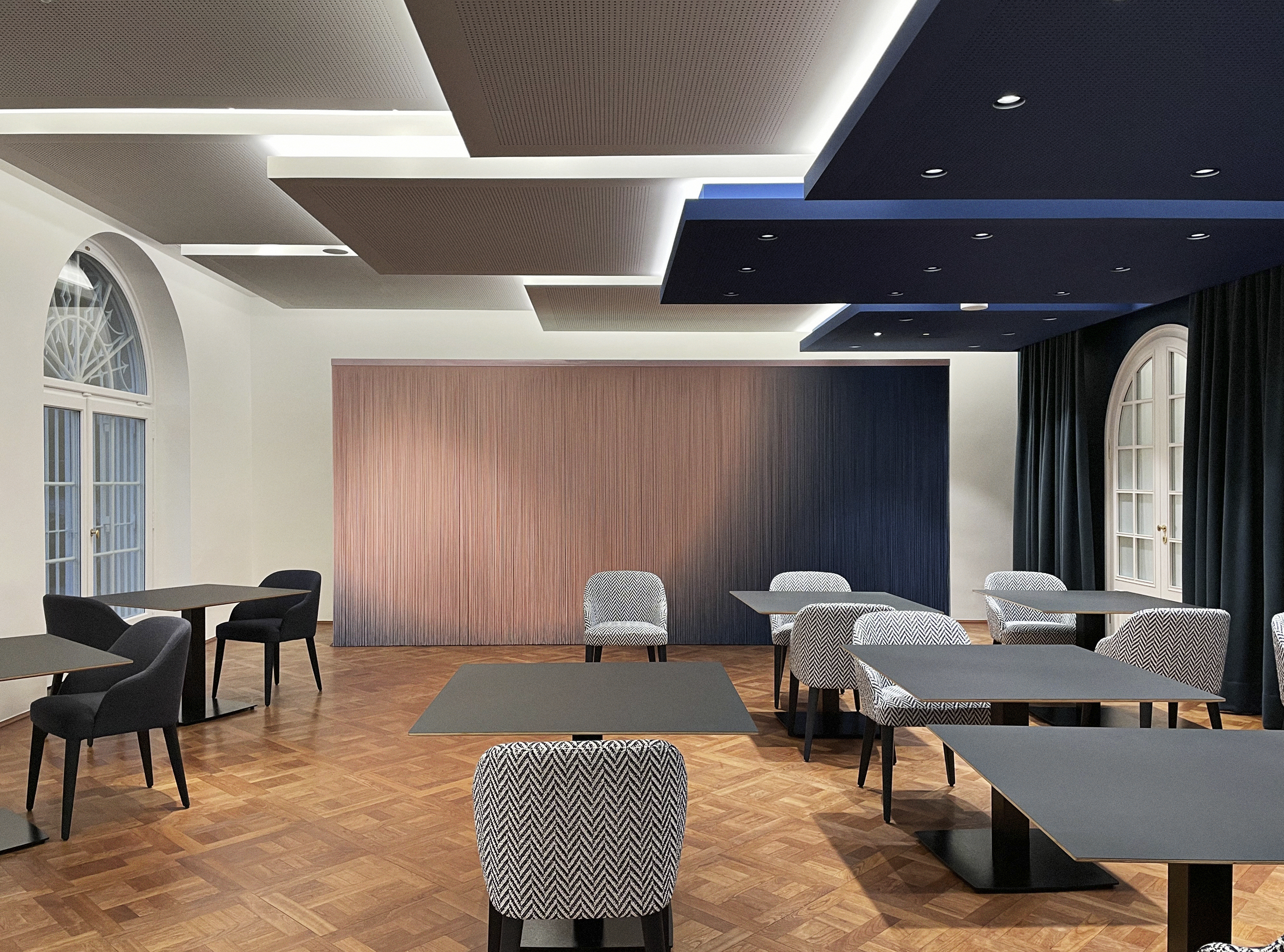
06/2021 I TRANSMIT. 100 YEARS OF JOSEPH BEUYS
An exhibition project of the Pinakothek der Moderne | June, 25 to October, 10 2021
On the occasion of Joseph Beuys' 100th birthday ten multiples by Joseph Beuys leave the Pinakothek der Moderne and provide new impulses at various locations in Munich. Without the familiar museum environment and without the effective and controversial personality of Beuys, his works the works face the exchange with a new generation.
Until October, 10 the multiple “Kunst=Kapital” will be a guest at Munich Re. It can be viewed from the outside at any time in the vitreous entrance area of the east building.
“With the simple, perhaps provocative equation “art=capital”, Joseph Beuys combined two terms on a small writing tablet that are usually assigned to different areas: “art” to culture, “capital” to the economy. For Beuys, there was no such separation. In creativity (“art”) he saw the potential (“capital”) to dissolve mental barriers. The power of his art lies in the linking of the seemingly unrelated. Beuys builds associative bridges and thus makes clear what an indispensable role art plays in our society.” (From the text accompanying the exhibition)
We look forward to participating in this cooperation project of the Pinakothek der Moderne and cordially invite you to stop by!
All further information about the multiples and the locations via the BeuysCityMap at Joseph Beuys www.pinakothek-beuys-multiples.de
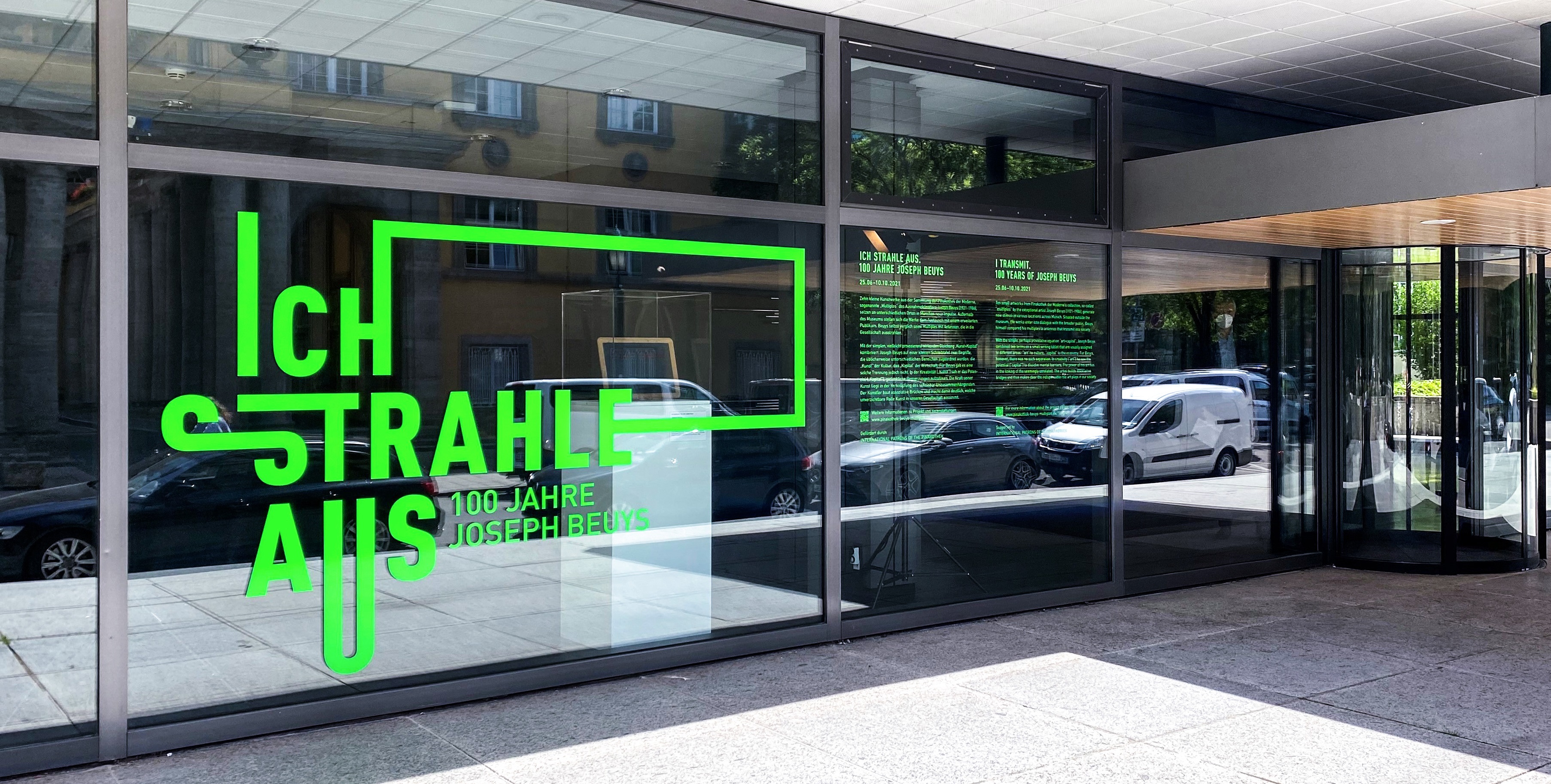
03/2021 GUEST ARTIST | MIRIAM FERSTL
LIGHT CELLS
Photographs by Miriam Ferstl are the prelude to temporary presentations of contemporary art in a historical setting.
For years, the artist Miriam Ferstl has photographed crystal chandeliers in theatre rooms, opera houses, churches, synagogues and mosques throughout Europe and the Maghreb - from a bottom view. The various lustres appear like colourful, luminous, abstract patterns. They are reminiscent of microcosmic or galactic structures, but also of the blossoms of a plant – of universal basic forms of nature that seem to follow an inherent blueprint.
Miriam Ferstl's work deals intensively with the connection between art, natural science and metaphysics and conveys a visual experience that points far beyond the motif. This is also the case in the presentation at Munich Re. For on closer inspection it becomes evident that one of the large-format photographs is the chandelier located in the room. Ferstl thus not only establishes a relationship to the location, but also to the real object in its original context. The visitor witnesses an almost magical transformation and is invited to look at the world from a different perspective.

01/2021 NEW IN THE COLLECTION I PHILIPPE DECRAUZAT
Philippe Decrauzat
Flag Wave (Repeat and Stop), Flag Wave (Prolonged Hesitation)
2020
"I like to play with the representation of movement and volume" states the artist Philippe Decrauzat and thus sums up the quintessence of his work - whether it is painting on canvas, room-filling wall painting, drawing, sculpture, installation or film.
In the two painterly compositions Flag Wave (Repeat and Stop) and Flag Wave (Prolonged Hesitation) from 2020, the artist's working method is impressively demonstrated. Although it is a two-dimensional painting on canvas, the impression of a flag blowing in the wind is created. Decrauzat achieves this effect due to a precisely composed arrangement of 54 black lines each, which seem to oscillate three-dimensionally in space. The unusual formats support the conceptual theme of the artist: the fallibility and weakness of the human eye and the gap that opens up between the eye and the brain. We see something without the brain being able to simultaneously process the information shown: the optical illusion takes its course.
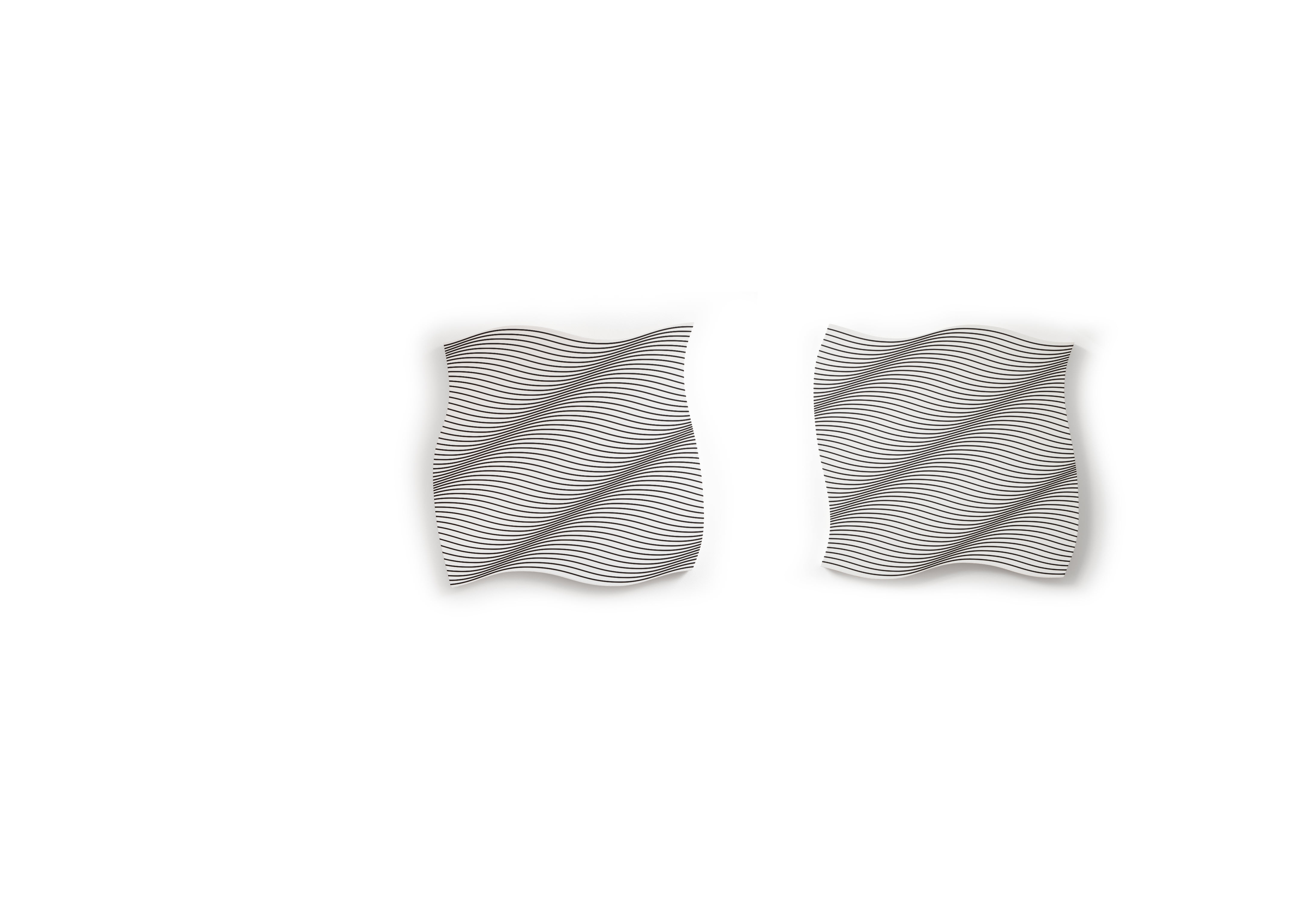
12/2020 NEW IN THE COLLECTION I SÉBASTIEN DE GANAY
Sébastien de Ganay
Light Blue Folded Flat Sequence 01
2016
The examination of processes of perception and experimentation with various materials is central to the work of the French-born artist. In continuity with de Ganay's exploration of folds since the early 1990s and inspired by everyday post-its that the artist uses for notes and sketches, the series Folded Flats has been created since 2015.
In serial mode, de Ganay produces minimalist abstract wall sculptures made of aluminium that oscillate between painting and sculpture, between surface and space. The artist avoids a characteristic signature, giving his folds an austere yet clear aesthetic. The five-part work Light Blue Folded Flat Sequence 01 appears like a slowly unfolding monochrome piece of paper on the wall; the process of opening can be mentally traced through the sequence.
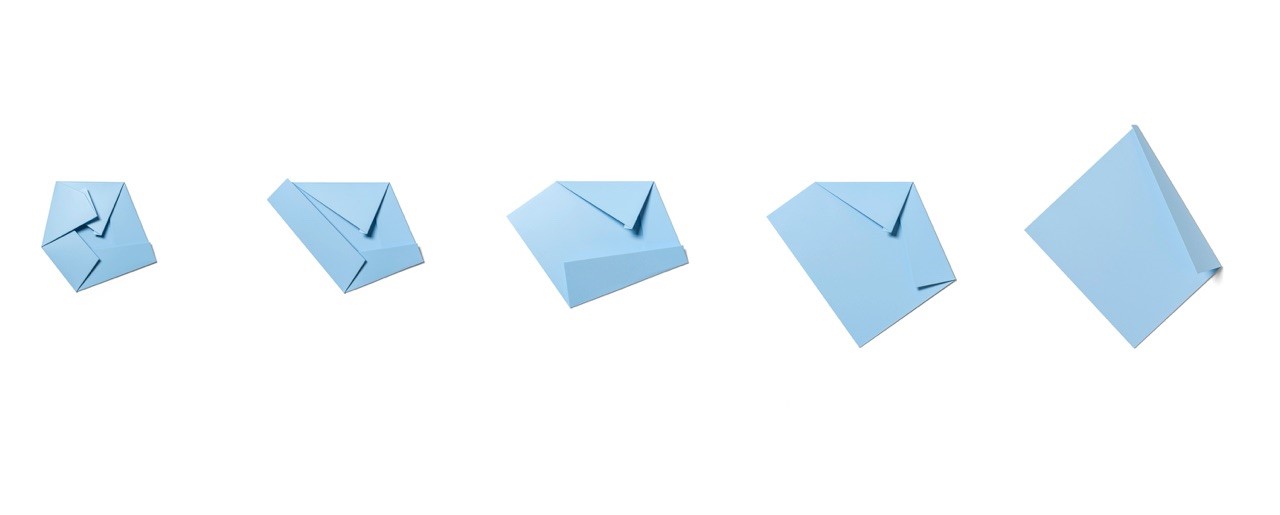
11/2020 NEW IN THE COLLECTION | BERIT SCHNEIDEREIT
Berit Schneidereit
Five works of the Draperie series
2018-2021
At first glance at the works of Berit Schneidereit nature is recognizable, but details of the vegetation and place, remain mysteriously hidden: over leaves, palm fronds and bushes lies a kind of veil, a grid-like fabric, which cannot be clearly classified and which inhibits the view. During her travels, the artist has specifically explored public, urban parkland or botanical gardens and photographed situations where a visual shield closes the view. However, the flora, the light situation and the abundance of vegetation are more noticeable than visible. At the same time, both the light- and "view"-permeable fabric causes a merging of foreground and background and thus creates a condensation of the pictorial space.
Berit Schneidereit explores the relationship between real and photographic image space, proximity and (medial) distance. The viewer is thus confronted with his/ her own experience and memory of inner images, places and spaces. In the end, the reality depicted remains obscured, not really tangible, and thus a kind of mystery, the stimulus of which arises from the unfathomable.

02/2020 ART AND ARCHITECTURE | ROLAND BURKART
INFINITY GREEN
Site-specific art installation for one of the underground passages at Munich Re
With Infinity Green, Montpellier-born artist Roland Burkart challenges our perception of reality. The green of the floor covering refers to the green screen used in film and television studios, a technique that makes it possible to place objects or people retrospectively in front of any background that has been photographed in real life or generated on the computer. Through the creative finesse of wall-high mirror elements along the side walls, combined with the use of indirect light sources, the artist succeeds in combining the boundlessness inherent in the green screen technique with the infinity of the double reflection. Burkart transforms the passage into a space reflecting into infinity, in which wall and floor seem to merge and which confronts the passer-by with himself in a wondrous endlessness.

properties.trackTitle
properties.trackSubtitle
